How to Hire the Best Myntra Clone Developer
Create a powerful, customizable streaming solution with Miracuves’ Myntra Clone, equipped with high-performance features and next-gen technology.
So you’ve decided to launch your own eCommerce platform — one that rivals the seamless experience, rich UI, and high-performance architecture of Myntra. You’ve done your market research, locked in your niche, and maybe even explored revenue strategies. The next step is mission-critical: choosing the right development partner.
Hiring a company to build your Myntra clone isn’t about finding the cheapest team or the first agency that pops up on Google. It’s about finding a partner who truly understands the dynamics of fashion eCommerce, mobile responsiveness, real-time inventory, and scalable systems.
Let’s walk through how to hire the right Myntra clone clone developer who can bring your vision to life.
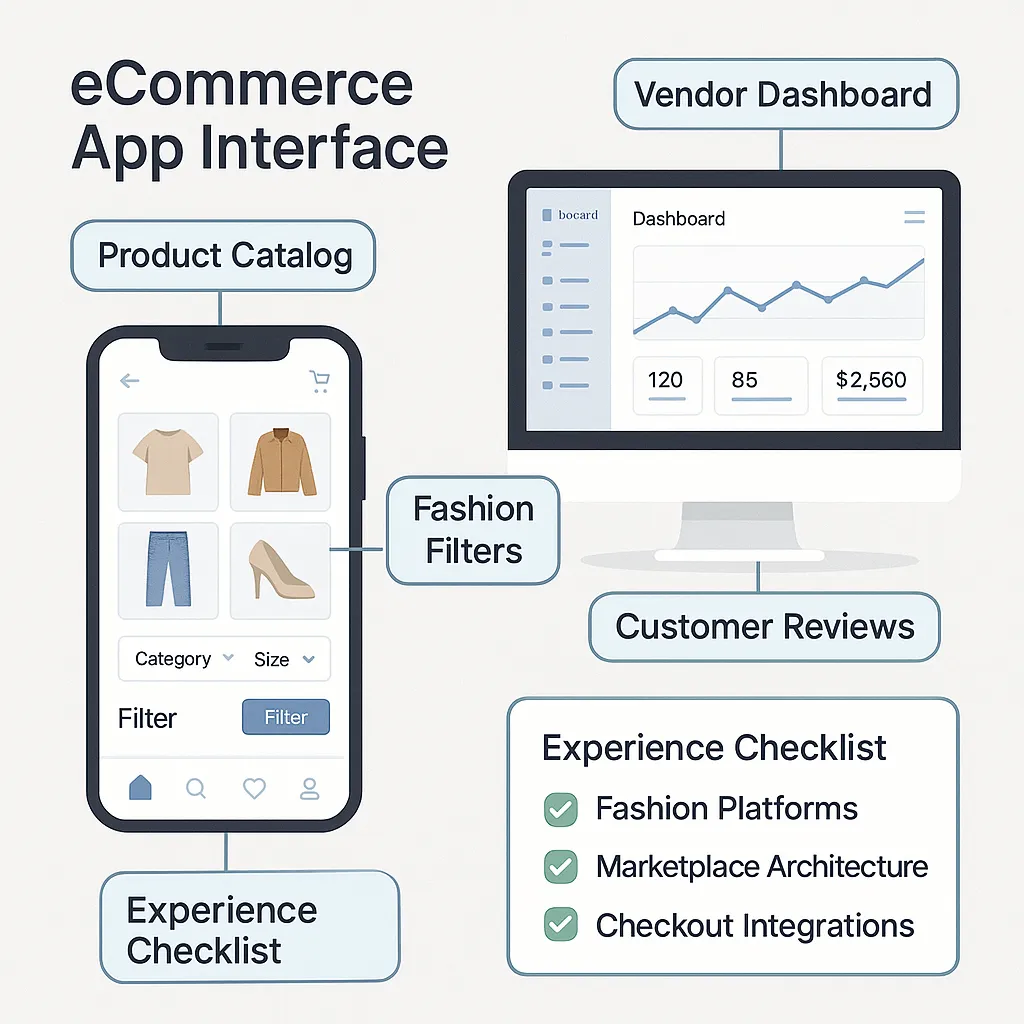
Look for Domain Expertise
This isn’t just about coding. It’s about building a platform that supports large catalogs, high-quality product imagery, seasonal campaigns, and conversion-focused design — all of which Myntra nails.
Here’s what to prioritize:
Previous fashion/eCommerce projects: Have they built fashion-specific platforms or similar clones before?
Marketplace understanding: Look for familiarity with vendor panels, product variant management, dynamic pricing, and customer segmentation.
Checkout and logistics integration: Experience with payment gateways, cart recovery systems, and shipping API integration is a must.
Case studies & testimonials: Can they show working examples and measurable results?
Domain knowledge ensures the development team won’t just meet your expectations — they’ll anticipate them.
Tech Stack & Scalability
Launching is just the beginning. Your Myntra clone should be ready to handle traffic spikes during festive sales, product drops, and promotions. That means a strong, modern tech stack.
Ask about:
Frontend tech: React, Next.js, or Vue.js for lightning-fast, mobile-first UI.
Backend frameworks: Node.js, Laravel, or Django for scalable, secure architecture.
Database & hosting: Cloud-native solutions like AWS, Firebase, or MongoDB that support real-time syncing.
Microservices readiness: Can they break features into modules (inventory, payment, user profiles) for independent scaling?
Security protocols: SSL, role-based access, data encryption — these aren’t optional in eCommerce.
A future-proof architecture today prevents expensive rebuilds tomorrow.
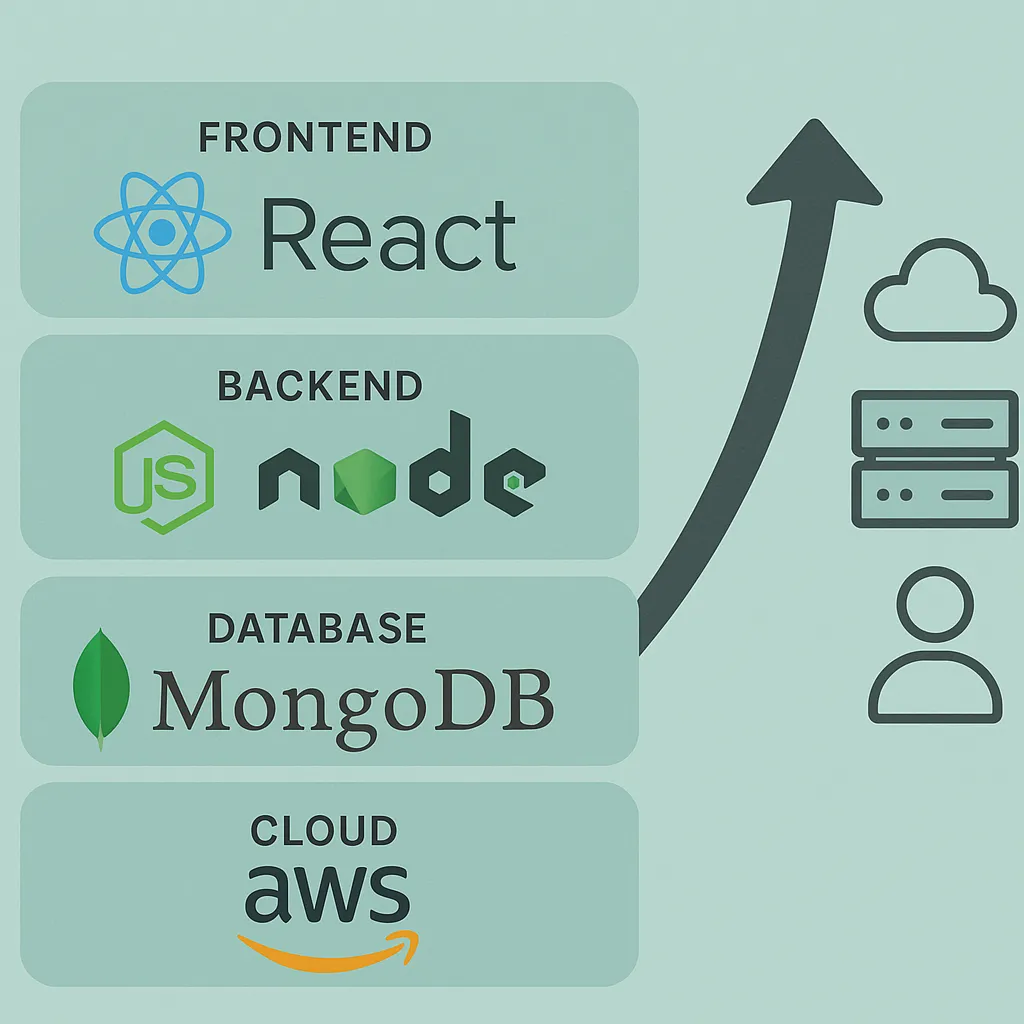
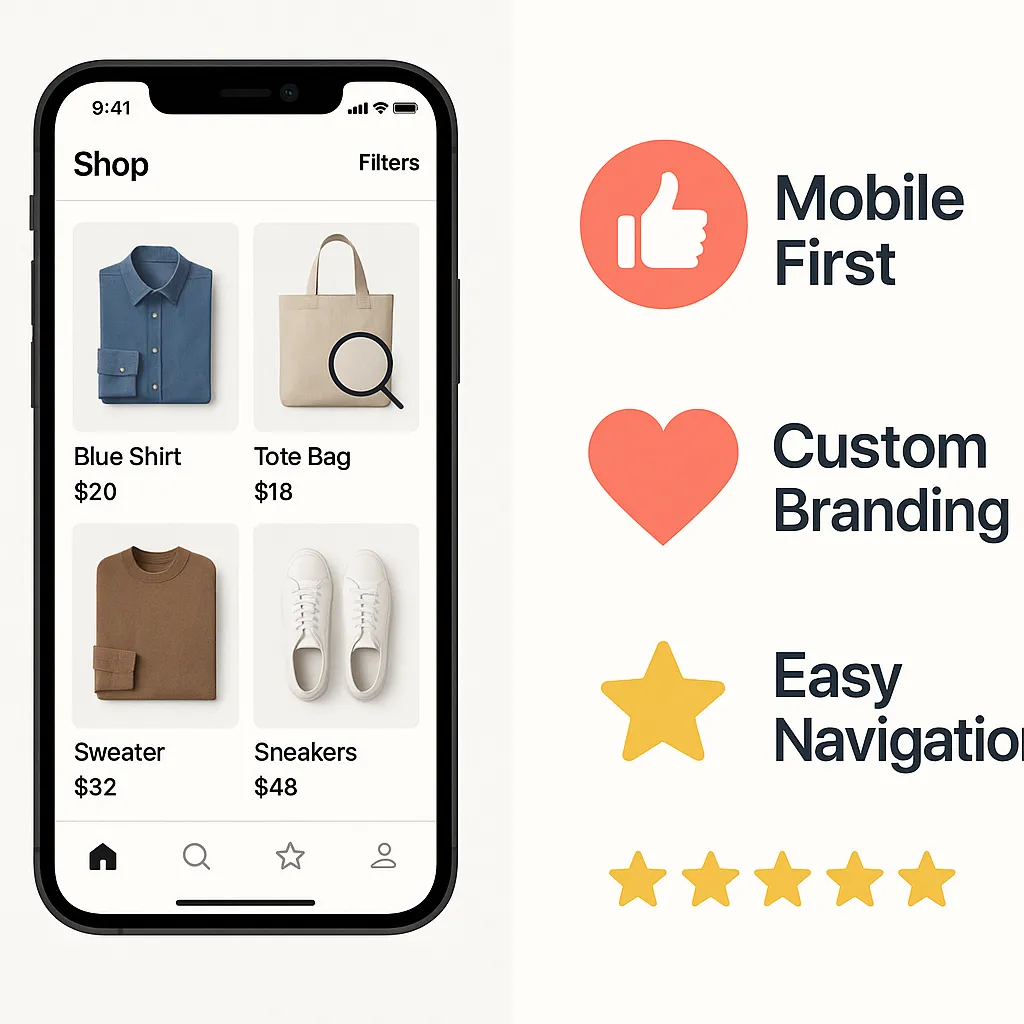
UI/UX Capabilities
Your Myntra clone needs to feel as premium and intuitive as the original — especially on mobile, where most users shop.
Here’s what matters:
Visual storytelling: Can they implement dynamic banners, influencer-style feeds, and product zoom effects?
Personalized shopping flows: Filters, size guides, recently viewed items — all designed for easy navigation.
Admin & vendor dashboards: Intuitive panels for catalog uploads, sales tracking, and order fulfillment.
Branding flexibility: Make sure your clone reflects your brand, not someone else’s.
Speed & accessibility: Lightweight design, offline support, and optimized image handling are key for user retention.
User experience is not an afterthought — it’s your competitive advantage.
Communication & Workflow
Building a Myntra clone takes weeks (sometimes months), and your dev partner should treat this like a collaborative process, not a handoff.
Look for:
Clear sprint planning: Are timelines broken into modules? Is feedback expected after each phase?
Dedicated point of contact: You should be speaking to someone who understands your project, not just relaying messages.
Agile-friendly updates: Weekly demos, staging links, and regular progress reviews help ensure alignment.
Support after launch: Bugs, performance tweaks, and even new features shouldn’t require starting from scratch.
Good communication saves time. Great communication saves your product.
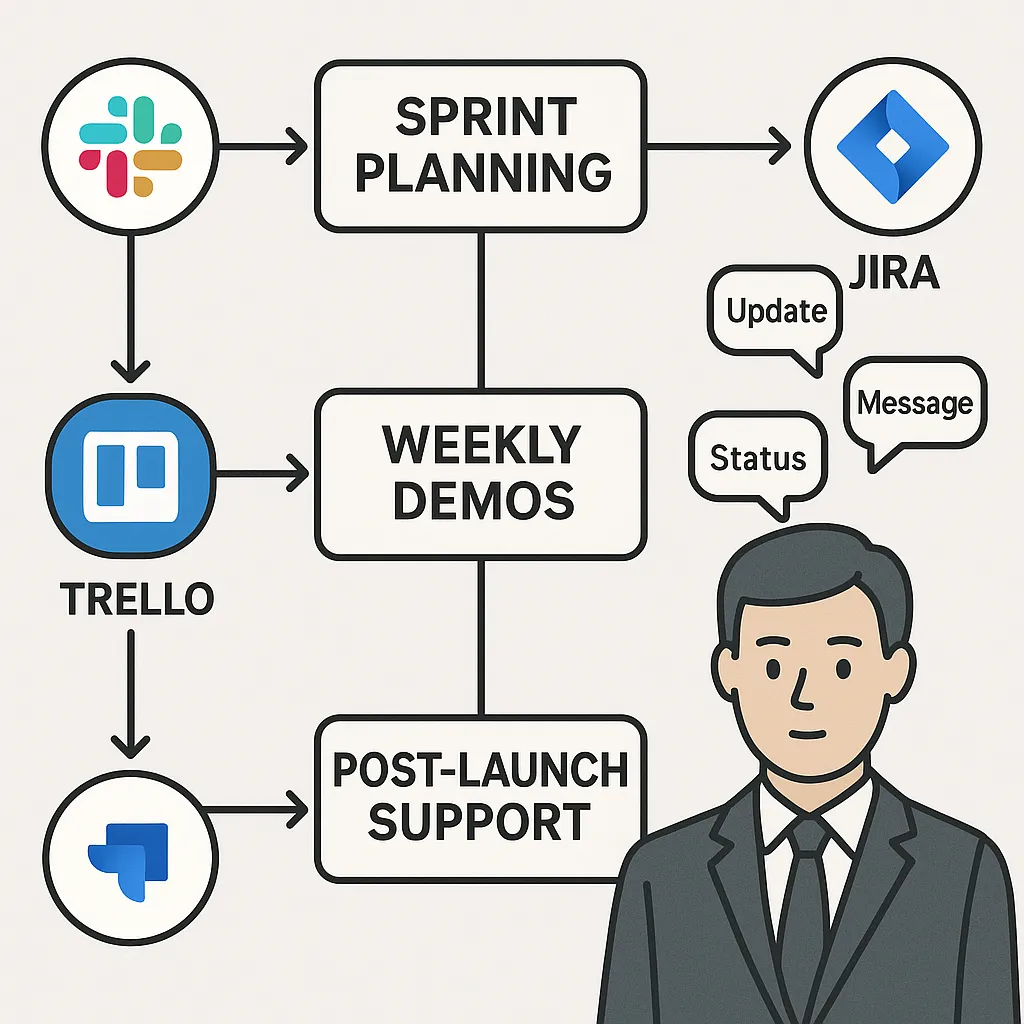
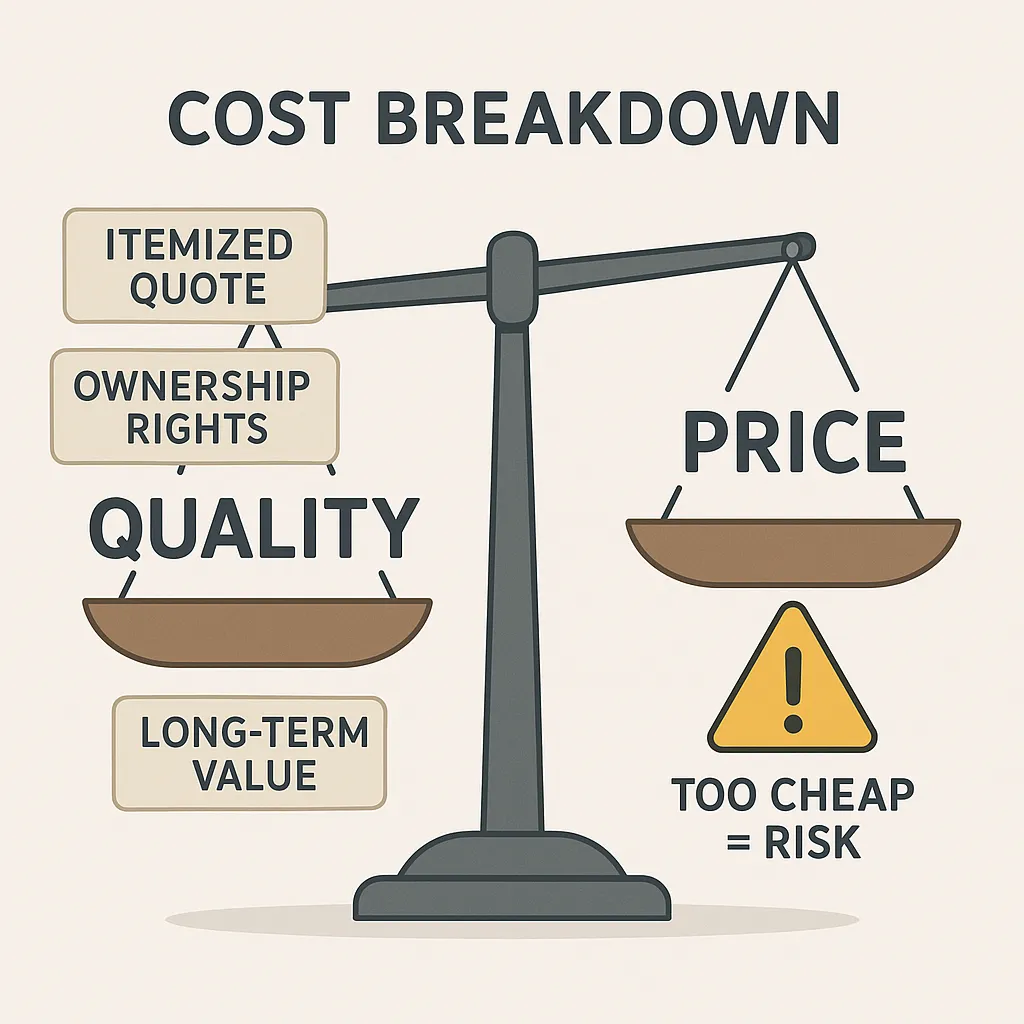
Pricing Models & Quality
It’s easy to get excited by a low quote — but a smart founder knows to ask: what’s not included?
Make sure you:
Request itemized quotes: Break down feature-wise pricing, hourly estimates, and what services come bundled (UI design, testing, devops).
Watch for fixed vs. flexible pricing: Are they rigid with scope or open to iterative changes as the product evolves?
Ask about post-launch costs: Hosting, maintenance, updates — factor these into your long-term budget.
Check for ownership terms: Will you have full access to the codebase, or is it SaaS-locked?
The best deal isn’t the cheapest — it’s the one that delivers value at every stage.
Choose the Right Development Partner
Even with a rock-solid business plan, building an eCommerce platform like Myntra is no walk in the park — you need a development team that understands the fashion tech ecosystem inside and out. Choosing the right Myntra clone development company can save you time, prevent costly mistakes, and help you launch faster with confidence.
Look for a partner that offers:
Proven experience in fashion and eCommerce app development
A strong portfolio of scalable, mobile-optimized storefronts
Expertise in integrating vendor dashboards, real-time inventory, and secure payment systems
End-to-end services — from design sprints to deployment and growth support
At Miracuves, we don’t just replicate features — we engineer powerful, brand-ready Myntra clone solutions designed for performance, scalability, and customer engagement. Let us take care of the tech, so you can focus on growing your brand and marketplace.
Conclusion
Hiring the best Myntra clone development company means more than finding developers — it’s about choosing a tech partner who gets the nuances of eCommerce, the pace of fast fashion, and the need for performance at scale. Look for relevant experience, solid tech architecture, high-level UI/UX, strong communication, and pricing transparency. These are the qualities that will set your app apart — and set it up for long-term success.
Frequently Asked Questions
A custom-built Myntra-style app typically takes 6–12 weeks for a fully featured MVP, depending on complexity and customization needs. However, with Miracuves’ ready-made solution, the platform can be launched in just 3 to 9 days, significantly reducing time-to-market.
Absolutely. The right clone developer will support custom modules like influencer profiles, AR try-ons, or loyalty rewards.
Most companies provide full code access, but confirm this before signing.
The development cost for a Myntra-style ecommerce platform typically ranges from $5,000 to $30,000+, depending on feature complexity, custom UI/UX requirements, and the development team’s expertise. However, Miracuves offers a ready-made, full-feature Myntra clone starting at just $2,899, providing a faster, more cost-efficient launch without compromising performance.
Choose a partner that offers post-launch support, whether for bug fixes, performance optimization, or scaling help.



